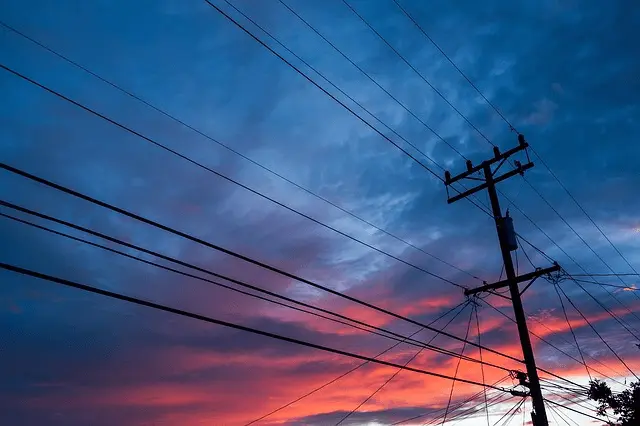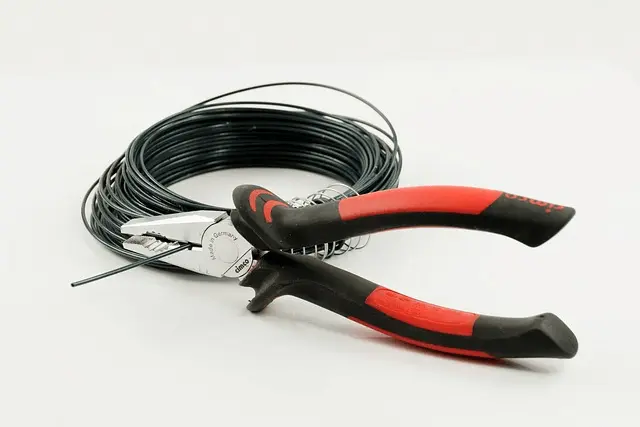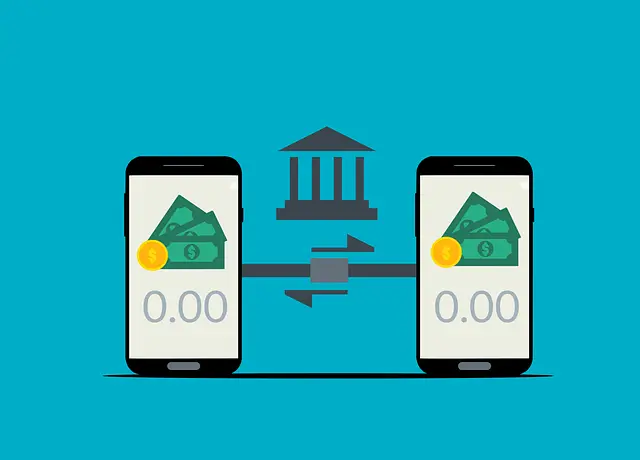Living in South Africa, everyone felt the load shedding, although many fail to understand the reasons. Loadshedding is a term used to describe the planned power outages that occur in the country when there is an insufficient supply of electricity to meet the demand.
The purpose of this article is to provide an in-depth understanding of load shedding, its causes, its effects, and how South Africans have to cope with it.
What is loadshedding?

Load shedding is a critical measure used by Eskom, South Africa's primary electricity supplier, to ensure that the country's power grid remains stable and operational during periods of high demand.
With a population of over 60 million people, South Africa's electricity demand has grown exponentially in recent years, putting significant pressure on the country's aging infrastructure. To avoid a complete blackout of the power grid, Eskom has implemented load shedding as a way to manage demand as well ensure that power is distributed fairly throughout the country.
During periods of high demand, the supply of electricity becomes strained, there is a risk that the entire power grid could collapse, leading to a complete blackout.
To prevent this from happening, Eskom implements load shedding, which is a deliberate power outage that is scheduled in advance. By reducing the load on the grid, Eskom manages the demand for electricity, so they ensures that there is enough power to go around.
Load shedding is a complex process that involves a lot of planning along with coordination. Eskom needs to balance the needs of different regions and industries, making sure that critical services like hospitals or emergency services are not affected.
Load-shedding schedules are typically published in advance, giving people time to prepare for power outages to minimize any disruptions.
Importance to the people
Despite Eskom's best efforts, load shedding remains and will be a significant issue to the South African economy. The country's aging infrastructure along with its growing population means that demand for electricity continues to outstrip supply. To address this, Eskom is investing in new power generation facilities and upgrading existing infrastructure. The company is also exploring alternative energy sources like solar or wind power, which could help to reduce the strain on the power grid.
Load shedding is a necessary emergency measure implemented by Eskom to prevent a total blackout of the power grid. Although it can be disruptive, it is an essential tool for managing demand. With ongoing investment in infrastructure and the exploration of alternative energy sources, Eskom is working to address the root causes of load shedding, so to ensure that South Africa's electricity supply remains stable for years to come, but it's a long and expensive process.
Why Does Loadshedding Occur?

Loadshedding is caused by a combination of factors that contribute to the insufficient supply of electricity in the country. The main reasons may be:
Insufficient Generation Capacity - Eskom generates most of South Africa's electricity, but due to years of underinvestment and poor maintenance, the company's generating capacity has been severely constrained. To the point: this is the main reason.
Ageing Infrastructure - Eskom's infrastructure is old and in need of urgent maintenance and upgrades. Old infrastructure cannot cope with the total demand for electricity.
Unplanned Maintenance - Eskom's power plants require regular maintenance, and unplanned outages often occur, causing power shortages.
Technical Problems - Technical faults and breakdowns at Eskom's power stations and transmission lines often lead to power outages.
Environmental Factors - Natural disasters, such as floods and lightning strikes, can cause damage to Eskom's infrastructure and disrupt the power supply.
How does it work?

Loadshedding is a rotational power outage that is implemented in stages. Eskom has divided the country into several stages, and each stage corresponds to a specific amount of load that needs to be shed. The load-shedding schedule is published on Eskom's website, and it indicates the time and duration of each power outage.
During the shedding period, Eskom switches off the power to certain areas to reduce the load to the grid. The areas that are affected by are being rotated according to the loadshedding stage, and the duration of each power outage depends on the stage.
The power is switched off for a few hours, and then it is switched on again. The process is repeated until the demand for electricity is reduced to an acceptable level.
The Effects of load shedding
Loadshedding has several negative effects on the country and its people and will be hard to forget. The most immediate effect is the inconvenience caused by the power outages. People cannot carry out their daily usual activities. Businesses are forced to shut down.
The lack of electricity also affects the water supply, as many water treatment plants rely on electricity to operate.
The lack of electricity also affects public transportation, as trains and buses rely on electricity to operate. Finally, electricity is required as well in the banking industry, telecommunications and many other places.
Coping with Loadshedding

What you need to know. There are several ways to cope with load shedding. The first step is to be aware of the load-shedding schedule and plan your activities accordingly. Here you can check Escoms load-shedding schedules.
During load shedding, it is important to conserve energy. This can be achieved by switching off all non-essential appliances and lights. The use of energy-efficient appliances and light bulbs can also help to reduce the demand for electricity.
Keep a torch and spare batteries handy: During load shedding, you will need a torch to navigate your way around your home or office. It's best to have a few options for a torch, both fire type and LED type. A simple candle will be handy in case you run out of power. Make sure you have spare batteries, those will be handy too.
Keep your phone and other devices charged: Make sure your phone and other devices are fully charged before load shedding starts. You can also invest in a power bank to keep your devices charged during power cuts. UPS is a step-up option in the field of power supply, that can power your computer in need.
Stock up on non-perishable food: During load shedding, you may not be able to cook food or keep perishable items in the fridge. For the time being, stock up on non-perishable food items that you can eat without cooking.
Use alternative power sources: If you can afford it, consider investing in a generator or solar panels to provide backup power during load shedding. If you want to find a more interesting option, check plug-n-play type solar powers that you plug directly into your electrical socket
Stay informed: Check the load-shedding schedule regularly to know when your area will be affected. You can also sign up for SMS or email notifications from the power utility.
We will cover some tips and tricks in another blog post.
The Impact of load shedding on Communications to be affected

One of the most severely affected areas is the country's communication networks. In this section, we will explore the impact of load shedding on communications, including internet connectivity, mobile networks, and other communication services.
Internet Connectivity
Load shedding can significantly impact internet connectivity, especially in areas where the power supply is already unstable.
During load shedding, internet service providers (ISPs) often switch to backup generators to keep their services running. However, these generators can only provide power for a limited time, and once they run out of fuel, internet connectivity is lost. This can be especially problematic for businesses that rely on the internet to conduct their operations.
Furthermore, the quality of internet connectivity during load shedding can also be impacted. Backup generators are not as reliable as the main power supply, and this can result in slower internet speeds, increased latency, and even dropped connections.
Mobile Networks
Mobile networks are also significantly impacted by load shedding. Like ISPs, mobile network providers rely on backup generators to keep their services running during power outages. However, the battery life of these generators is limited, and once they run out of power, mobile network coverage is lost.
During load shedding, mobile networks also experience an increased load as people try to use their phones and other devices to stay connected. This can result in slower data speeds, poor call quality, and dropped calls.
Other Communication Services
Load shedding can also impact other communication services, such as landline phones and fax machines. These services typically rely on the same infrastructure as the power grid, and when load shedding occurs, they are also affected.
For businesses that rely on these communication services, load shedding can be especially problematic. It can result in missed calls, delayed communication, and even lost business opportunities. Additionally, load shedding can impact emergency communication services, such emergencies or the police, which can put people's safety at risk.
Load shedding has a significant impact on various communication services in South Africa. From internet connectivity to mobile networks and landline phones, load shedding can result in disrupted communication, lost business opportunities, and even safety risks. It is essential for communication service providers to have backup plans and reliable backup power supplies in place to minimize the impact of load shedding on their services.
Loadshedding and Financial Transactions

Loadshedding can have a significant impact on financial transactions, especially for those who rely on electronic payment methods. During power outages, ATMs and point-of-sale (POS) machines may not function, making it difficult for people to access their money or make purchases.
So how to send cash to or receive money during outages? How the recipient may receive funds during power outages.
One solution to this problem is to use mobile money services such as Glow which we are building to your convenience. Our services allow users to send and receive money using their mobile phones in the event of load shedding. For you and for the recipient of cash that is a lifesaver, as he may be able to take cash at any working cash counter.
Users can also check their account balances using their mobile phones when they need to know what's on my card. Other services (such as buying airtime) can be used as well. Just enter your Glow application from your phone to make use of a Glow wallet.
Conclusions
In conclusion, load shedding is a common occurrence in South Africa and people are getting used to living with it, but it is important for people to understand its causes, effects, and how to cope with it. The impact of load shedding on financial transactions can be mitigated by using mobile money services and investing in backup power sources.
By being aware of the load-shedding schedule and taking steps to conserve energy, we can all play our part in reducing the load on the grid and ensuring a more stable power supply for South Africa.